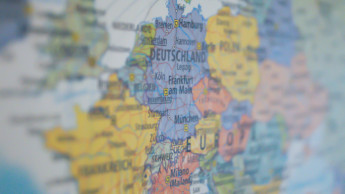After the retail trade in the 27 EU states already recorded a sales increase of 1.5 per cent in the first coronavirus year of 2020, sales rose again significantly by 6.8 per cent in 2021. The highest growth rates were in smaller Eastern European states such as Lithuania (plus 17 per cent), Slovenia (plus 16 per cent) or Estonia (plus 13 per cent). Larger markets such as France, Spain and Italy also all recorded retail growth rates of more than 7 per cent. This is shown by the new study on retail in Europe published by GfK's Geomarketing division. In addition to sales development, the study looks at other key indicators, including the use of modern retail technology, where the DACH region does not score particularly well, and online buying behaviour.
The strong sales development of the retail sector is due in particular to the non-food sector, which grew in double digits in the majority of countries in 2021 and even exceeded 20 per cent in individual countries such as Slovenia. The strong sales growth in 2021 here is mainly due to the weak guidance from 2020, when the coronavirus pandemic had a tighter grip on European countries.
Other important results
Purchasing power: the nominal purchasing power of EU citizens grew by 2.4 per cent on average in 2021.
Share of retail sales in private consumption: retail sales in the EU increased their share of private consumption expenditure to 35.8 per cent, despite lockdowns and access restrictions. Compared to 2019, i.e. before the coronavirus, the retail sector has thus gained 3.1 percentage points.
Inflation: having already reached 2.9 per cent in 2021, EU-wide inflation is expected to reach 6.8 per cent in 2022 due to high energy prices and the war in Ukraine. The price increase will be particularly strong in many Eastern European countries.
Future Buy: the offer of shopping via augmented or virtual reality in retail is very limited in Western Europe and shows pronounced national differences. For example, Spain and the United Kingdom are Western European frontrunners, while the DACH countries lag behind in this area.
Regional online purchasing behaviour: in the countries bordering the Mediterranean, Sweden and Switzerland, there is a clear urban-rural contrast. In these countries, the online-savvy population tends to be found in the large cities and metropolitan areas. In Germany, Austria, the Netherlands, Belgium and Great Britain, higher index values can be found in some of the smaller communities.

 Menü
Menü

















